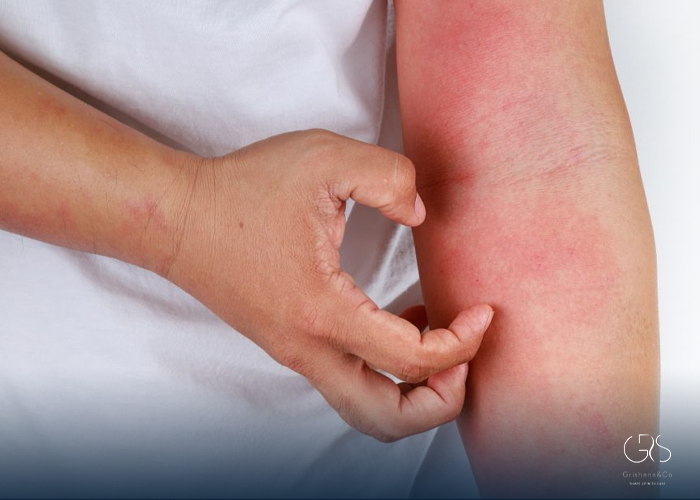Exposure to sunlight is typically associated with feelings of warmth and happiness, but for some individuals, it can trigger an allergic reaction known as sun allergy. Also referred to as photosensitivity or photodermatitis, sun allergy occurs when the immune system reacts abnormally to certain wavelengths of sunlight. In this article, we will explore the Sun allergy causes, symptoms, treatment options, and provide a diverse perspective on this condition.
Causes of Sun Allergy:
Sun allergy can be caused by a combination of factors, including:
1.UV Radiation: Ultraviolet (UV) radiation from the sun is the primary trigger for sun allergy. The body’s immune system may react to the UV radiation by releasing chemicals that cause inflammation and rashes.
2.Medications: Certain medications can make the skin more sensitive to sunlight, increasing the risk of sun allergy. Common examples include certain antibiotics, nonsteroidal anti-inflammatory drugs (NSAIDs), and prescribed acne medications.
3.Chemicals: Some individuals may develop a sun allergy due to contact with certain chemicals found in sunscreen, cosmetics, or skincare products. These chemicals can cause an allergic reaction when exposed to sunlight.

Symptoms of Sun Allergy:
The symptoms of sun allergy can vary from person to person but may include:
Rash: The most common symptom is the development of a red, itchy rash on exposed areas of the skin, typically occurring within 24 hours of sun exposure.

Blisters or hives: In more severe cases, sun allergy can cause the formation of blisters or hives on the skin.
Swelling: Some individuals may experience swelling, especially around the face, lips, and eyelids.

Itching and burning: Sun allergy can cause intense itching and burning sensations on the affected skin.

Other symptoms: In rare cases, sun allergy may lead to symptoms such as headache, nausea, or even difficulty breathing.
Treatment Options:
The treatment for sun allergy aims to relieve symptoms and prevent further reactions. Some common approaches include:
1.Avoidance: The most effective way to manage sun allergy is to avoid direct sunlight during peak hours and wear protective clothing, sunglasses, and broad-spectrum sunscreen with a high sun protection factor (SPF).
2.Topical Steroids: For milder cases, over-the-counter hydrocortisone creams may be applied to reduce inflammation and itching.
3.Antihistamines: Oral antihistamines can help alleviate itching and reduce allergic reactions.
4.Phototherapy: In some cases, a dermatologist may recommend controlled exposure to sunlight to desensitize the skin and reduce allergic reactions.
5.Medication Review: If medications are causing the sun allergy symptoms, a healthcare professional may recommend an alternative medication or adjust the dosage.
Diverse Perspectives:
Sun allergy affects individuals differently, and it is essential to consider diverse perspectives concerning this condition. While some people find it manageable with lifestyle changes and medications, others may suffer from severe reactions that greatly impact their quality of life. Individuals with sun allergy may face challenges in outdoor activities, work environments, and even social interactions. It is crucial to acknowledge and accommodate these diverse experiences when discussing and addressing the condition.
Conclusion:
Sun allergy, or photosensitivity, is an abnormal reaction of the immune system to sunlight. It can cause a range of symptoms, including rashes, itching, and swelling. Various factors, such as UV radiation, medications, and chemical exposures, can contribute to this condition. Treatment options include avoidance measures, topical steroids, antihistamines, and phototherapy. It is important to consider diverse perspectives and provide support for individuals who experience the challenges of living with sun allergy.
Sources
- Mayo Clinic, Sun Allergy









